Old school: what were the games on - we are discussing unusual carriers
The video game industry has a rich history. Today we remember the unusual media on which the games were released: from flexible plates and micro cassettes to GD-ROM discs .
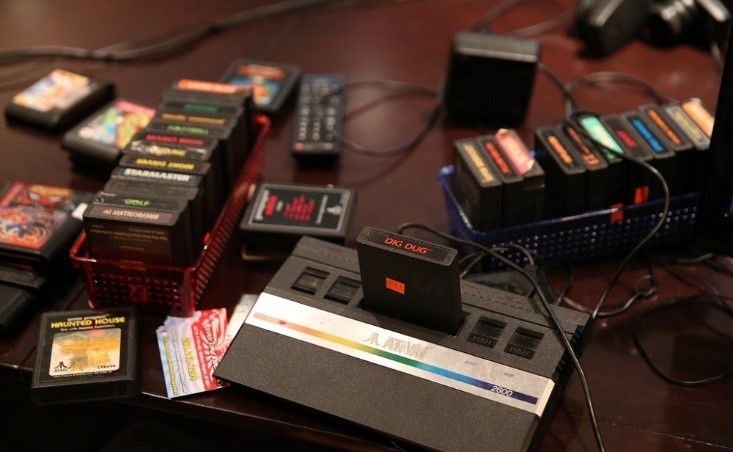
Photo PxHere / PD
Family Computer Disk System (FDS) is a peripheral device for NES, which was released in 1986 exclusively for Japan. Games for FDS came out on a special carrier - a 2.8x3 inch floppy disk called the Disk Card. Disk Card memory capacity was 112 KB. The format was based on a 3-inch Mitsumi Quick Disk diskette, which was also used in Japanese home computers and synthesizers.
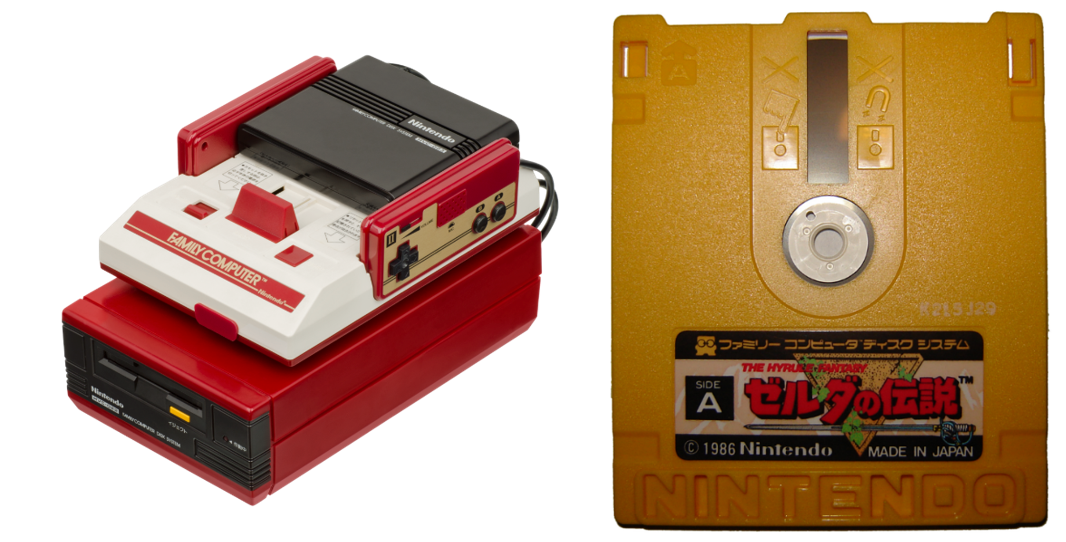
Photo Wikimedia / PD
The main advantage of Disk Cards over cartridges was that it was possible to overwrite information on a diskette and therefore remain in the game. Plus, this property allows you to buy new games, overwriting old ones. Until 2003 in Japan, Nintendo placedterminals called Disk Writers. For 500 yen, FDS users could overwrite a new game on a floppy disk. Usually a new game cost 2600 yen, and such an exchange was profitable.
The disk card format has not gone beyond Japan. Floppy disks were more vulnerable to damage, as in order to save, the manufacturer produced most of the Disk Cards without a dust cover. At the same time, the data were recorded on two sides of the magnetic tape; therefore, during the game, the Disk Card had to be turned over - this was not very convenient. Problems arose from the very FDS: the drive pod was non-standard and often failed, and the device could only be returned to the Nintendo office for repair.
Over 200 different games were released on FDS, but by the beginning of the nineties they had forgotten about the format, and only a small number of titles appeared on it (they didn’t refuse to diskette at all).
In 1976, an important meeting of microcomputer manufacturers was held in Kansas City. Representatives of the companies discussed the recently created HITS technology (Hobbyists' Interchange Tape System), which allowed the transmission of binary code using audio signals.
He gave rise to a single format for storing code on a magnetic tape - Kansas City Standard. But he did not catch on, and all manufacturers began to use their own formats. However, Kansas City Standard still contributed to the emergence of Floppy-ROM .
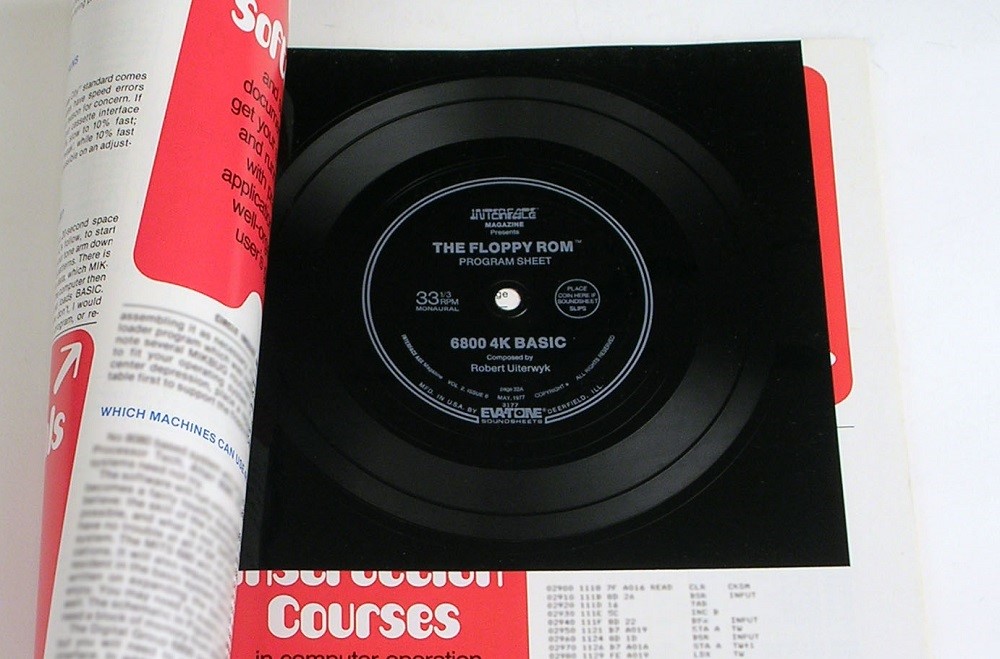
Photo Wikimedia / PD
Floppy-ROM is a format for recording computer data on flexible vinyl records.. The idea was to take existing programs in the Kansas City Standard format and make copies on flexible records from the master recording. For example, this is how the 4K BASIC programming language interpreter was distributed.
Floppy-ROM could be run on a linear output player connected to the computer. One of the programs that came out in the Floppy Disc format was game The Thompson Twins Adventure. The graphic quest was released in 1984 for the ZX Spectrum and Commodore 64 and was dedicated to the adventures of members of the Thompson Twins group.
In 1983, the ZX Microdrive was released specifically for the ZS Spectrum . Replaceable cartridges measuring 44 × 34 × 8 millimeters in which there was a magnetic tape with a width of 1.9 mm and a length of 5 m were inserted into Microdrive.
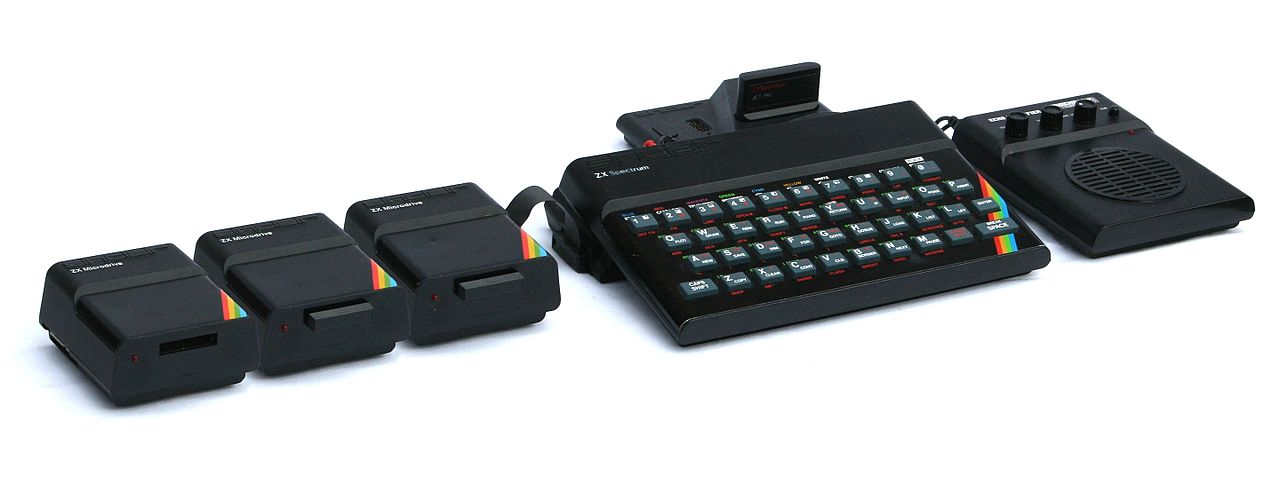
Photo Wikimedia / PD
The device was positioned as an inexpensive replacement for floppy drives that cost from £ 235. ZX Microdrive was sold complete with an interface for connecting to a computer (for £ 79.95). Despite the relatively low price of the device, the cartridges themselves were initially sold for £ 4.95. For comparison, at that time ordinary cassettes could be bought for £ 2. Cartridges were also unreliable media: when using Microdrive, the film stretched and became unreadable.
Although later the prices for cartridges were reduced to £ 1.99, programs exclusive to Microdrive did not appear. Several applications could be purchased complete with a device from the manufacturer. In the expanded set were listed not only Microdrive and the interface for connection, but also cartridges with programs. Among them were the game Ant Attack and Games Designer editor. Micro-cassettes were
also used to record programs . In 1981, the Epson HX-20 was released , the first computer in the world to hold in your hand. The data was stored on microcassettes of size 50 × 33 × 7 mm. For example, this is how the Bomber game worked on the HX-20.
In 1980 MB Electronics introduced an unusual device - the console for audio games Milton Bradley OMNI Entertainment System. OMNI used the Stereo 8 cassettes. The
games were in quiz format: questions were written on the cassette, to which players had to answer using eleven buttons on the device. The gadget automatically scored points. In total, there were thirteen games for the console with quizzes on various topics: from children's projects with the heroes of “Sesame Streets” to film festivals with American actor Vincent Price (Vincent Price) as a presenter.
Despite the unusual implementation, OMNI did not become successful. In part, this was influenced by the high price of the device - $ 120 ($ 380 in terms of modern money).
GD-ROM is a special disk format developed by Yamaha for the Sega Dreamcast console. This is a modification of a CD-ROM with a higher recording density. The disk contained 1.2 GB of information and was protected from copying. GD-ROM had two data storage areas: one contained data in a CD format and additional files (for example, a warning that the disk was intended for a GD-ROM drive), and the second contained the game data itself.
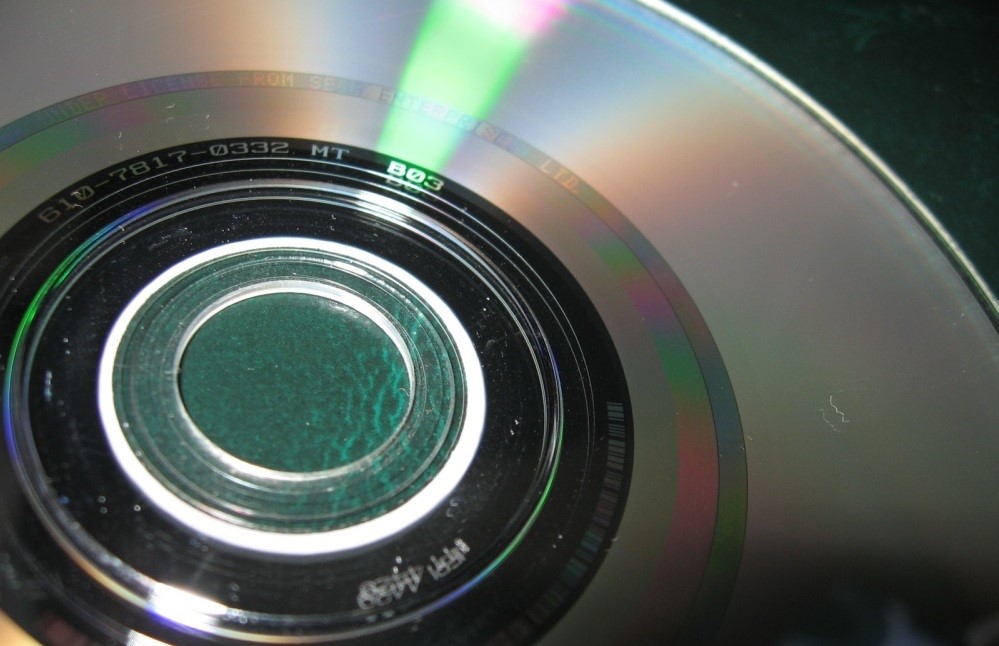
Photo Wikimedia / PD
The disadvantage of the format was that due to the dense recording the disc became more “gentle” - even small scratches and stains made it unreadable. In this regard, the technology never took off.
In our Telegram channel there is more interesting about acoustics and audio gadgets:
 Movies on discs
Movies on discs
 Unusual portable
Unusual portable
 Built-in acoustics guide
Built-in acoustics guide
 What is HD-vinyl
What is HD-vinyl
 Unusual audio gadgets
Unusual audio gadgets

Photo PxHere / PD
Nintendo fds
Family Computer Disk System (FDS) is a peripheral device for NES, which was released in 1986 exclusively for Japan. Games for FDS came out on a special carrier - a 2.8x3 inch floppy disk called the Disk Card. Disk Card memory capacity was 112 KB. The format was based on a 3-inch Mitsumi Quick Disk diskette, which was also used in Japanese home computers and synthesizers.

Photo Wikimedia / PD
The main advantage of Disk Cards over cartridges was that it was possible to overwrite information on a diskette and therefore remain in the game. Plus, this property allows you to buy new games, overwriting old ones. Until 2003 in Japan, Nintendo placedterminals called Disk Writers. For 500 yen, FDS users could overwrite a new game on a floppy disk. Usually a new game cost 2600 yen, and such an exchange was profitable.
The disk card format has not gone beyond Japan. Floppy disks were more vulnerable to damage, as in order to save, the manufacturer produced most of the Disk Cards without a dust cover. At the same time, the data were recorded on two sides of the magnetic tape; therefore, during the game, the Disk Card had to be turned over - this was not very convenient. Problems arose from the very FDS: the drive pod was non-standard and often failed, and the device could only be returned to the Nintendo office for repair.
Over 200 different games were released on FDS, but by the beginning of the nineties they had forgotten about the format, and only a small number of titles appeared on it (they didn’t refuse to diskette at all).
Flexible plates
In 1976, an important meeting of microcomputer manufacturers was held in Kansas City. Representatives of the companies discussed the recently created HITS technology (Hobbyists' Interchange Tape System), which allowed the transmission of binary code using audio signals.
He gave rise to a single format for storing code on a magnetic tape - Kansas City Standard. But he did not catch on, and all manufacturers began to use their own formats. However, Kansas City Standard still contributed to the emergence of Floppy-ROM .

Photo Wikimedia / PD
Floppy-ROM is a format for recording computer data on flexible vinyl records.. The idea was to take existing programs in the Kansas City Standard format and make copies on flexible records from the master recording. For example, this is how the 4K BASIC programming language interpreter was distributed.
Floppy-ROM could be run on a linear output player connected to the computer. One of the programs that came out in the Floppy Disc format was game The Thompson Twins Adventure. The graphic quest was released in 1984 for the ZX Spectrum and Commodore 64 and was dedicated to the adventures of members of the Thompson Twins group.
Unusual Tape Formats
In 1983, the ZX Microdrive was released specifically for the ZS Spectrum . Replaceable cartridges measuring 44 × 34 × 8 millimeters in which there was a magnetic tape with a width of 1.9 mm and a length of 5 m were inserted into Microdrive.

Photo Wikimedia / PD
The device was positioned as an inexpensive replacement for floppy drives that cost from £ 235. ZX Microdrive was sold complete with an interface for connecting to a computer (for £ 79.95). Despite the relatively low price of the device, the cartridges themselves were initially sold for £ 4.95. For comparison, at that time ordinary cassettes could be bought for £ 2. Cartridges were also unreliable media: when using Microdrive, the film stretched and became unreadable.
Although later the prices for cartridges were reduced to £ 1.99, programs exclusive to Microdrive did not appear. Several applications could be purchased complete with a device from the manufacturer. In the expanded set were listed not only Microdrive and the interface for connection, but also cartridges with programs. Among them were the game Ant Attack and Games Designer editor. Micro-cassettes were
also used to record programs . In 1981, the Epson HX-20 was released , the first computer in the world to hold in your hand. The data was stored on microcassettes of size 50 × 33 × 7 mm. For example, this is how the Bomber game worked on the HX-20.
Stereo 8
In 1980 MB Electronics introduced an unusual device - the console for audio games Milton Bradley OMNI Entertainment System. OMNI used the Stereo 8 cassettes. The
games were in quiz format: questions were written on the cassette, to which players had to answer using eleven buttons on the device. The gadget automatically scored points. In total, there were thirteen games for the console with quizzes on various topics: from children's projects with the heroes of “Sesame Streets” to film festivals with American actor Vincent Price (Vincent Price) as a presenter.
Despite the unusual implementation, OMNI did not become successful. In part, this was influenced by the high price of the device - $ 120 ($ 380 in terms of modern money).
GD-ROM
GD-ROM is a special disk format developed by Yamaha for the Sega Dreamcast console. This is a modification of a CD-ROM with a higher recording density. The disk contained 1.2 GB of information and was protected from copying. GD-ROM had two data storage areas: one contained data in a CD format and additional files (for example, a warning that the disk was intended for a GD-ROM drive), and the second contained the game data itself.

Photo Wikimedia / PD
The disadvantage of the format was that due to the dense recording the disc became more “gentle” - even small scratches and stains made it unreadable. In this regard, the technology never took off.
In our Telegram channel there is more interesting about acoustics and audio gadgets:
 Movies on discs
Movies on discs  Unusual portable
Unusual portable  Built-in acoustics guide
Built-in acoustics guide  What is HD-vinyl
What is HD-vinyl  Unusual audio gadgets
Unusual audio gadgets